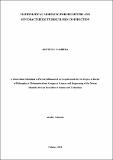| dc.description.abstract | Tuberculosis continues to be a life-threatening disease in Sub-Saharan African countries despite the
available vaccine whereas soil-transmitted helminth is among the neglected tropical disease that
causes threats to pre-school, school-aged children and child-bearing mothers. The infection by
helminths increases susceptibility to tuberculosis. Thus, there is a need to investigate the possi bility of co-infection of the two diseases due to its geographical overlap at cellular and population
levels. This dissertation presents deterministic mathematical models that are aimed at describing the
transmission dynamics of soil-transmitted disease and the co-infection with tuberculosis. The first
model that describes the transmission dynamics of soil-transmitted helminth with optimal control is
presented. The model was qualitatively analyzed and the threshold that governs the spread of the
disease derived. The best control model was developed, and numerical simulations were run using
a variety of control measures to determine the most cost-effective method for effectively containing
the disease. According to the findings, the most cost-effective method for combating the spread of
soil-transmitted helminths is a combination of health education and sanitation. The soil-transmitted
helminth model was modified to form the second model for the co-infection with tuberculosis. The
qualitative analysis was made to determine the equilibrium points and the conditions for the disease
eradication. The impact of helminth infection on tuberculosis and vice-versa were discussed and it
was observed that helminth infection enhances tuberculosis in the community. Numerical simulation
for the model revealed that the interventions that include a combination of measures for controlling
helminth infection, vaccinating the babies with bacille Calmette-Guerin vaccine and the treatment of ´
individuals with active tuberculosis were effective in controlling the spread of the diseases. The last
model considered the interaction of the helminth parasites, mycobacterium tuberculosis pathogens,
and the immune competence within an individual host. Numerical simulations showed that primary
infection by either helminth parasite or Mtb bacteria is unsuccessful within the host when the basic
reproduction number is less than the unit. | en_US |

